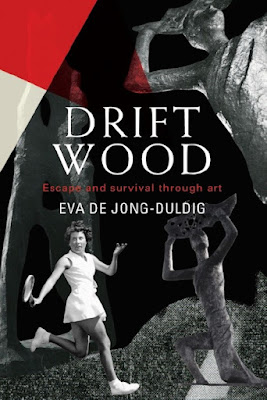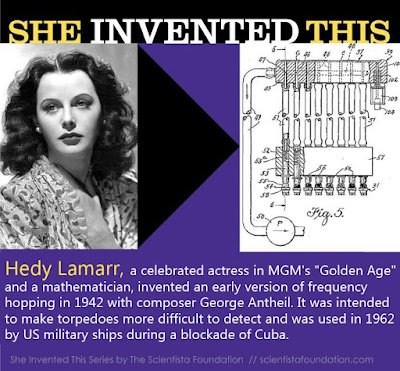(1869-1970) grew up in a cultured family on a large Fort Wayne Ind. estate. Her father wanted home-schooling for his daughters, but eventually Alice decided to become a doctor anyhow. She studied physics and chemistry with a local teacher, took biology and anatomy courses, overcame her father’s objections and enrolled in the top class
in 1892. There were c4,500 female doctors in the US then, mostly trained at women’s medical colleges.
Dr Hamilton, first-ever woman lecturer at Harvard
SmithsonianAfter graduating from Michigan, Dr Hamilton interned at
N.W Hospital for Women and Children, Minneapolis and then at the
New England Hospital for Women & Children Boston. Hamilton had already decided on a career in research rather than clinical medicine, but she wanted some clinical experience. In 1893, Hamilton accepted a pathology research position at
Johns Hopkins Medical School. Then she taught pathology at
Women's Medical School of N.W Uni Chicago and was soon was appointed Pathology Prof there.
She lived for years at
Hull-House Chicago, a settlement staffed by university graduates who helped immigrants and the poor, via social research and reform. Hull-House people investigated family income, school truancy, sanitation, TB and issues affecting community health and safety. And they helped organise Labour unions when many wealthy Americans opposed workers’ rights. And she later worked as a bacteriologist at
Chicago’s Memorial Institute for Infectious Diseases.
Hull-House, ChicagoIn the 1902 summer holidays, Dr Hamilton found Chicago in a severe typhoid fever epidemic. So she needed to explain typhoid, identifying the ineffective sewage disposal in 19th Ward, outdoor toilets, broken plumbing, standing water and flies. Tests on flies captured near filthy toilets indicated the presence of the typhoid bacillus. But blame properly fell on broken watermains that spewed sewage into water pipes, despite Chicago Board of Health denials.
That same year, when the Women’s Medical School of N.W University closed, Alice became a bacteriologist at Chicago’s newly opened Memorial Institute for Infectious Diseases. The U.S saw rapid industrialisation and by 1900 had become the world’s most industrialised nation. The growth occurred in mining, manufacturing, transport and commerce, enabled by cheap energy, better technology, growing transport, investment capital and cheap labour. But it also produced low wages, job insecurity, poor working conditions, industrial accidents & disease.
Industrial poisoning was problematic since it could take years to emerge. Most employees & employers were ignorant of the dangers from chemicals, and few factories employed doctors to monitor worker health. In any case, which workers would complain, risking their jobs?
Illinois' governor appointed Dr Hamilton to the
Illinois Commission on Occupational Diseases (1908-10). Industrial toxicology was little understood, so the commissioners asked her to study diseases where high mortality rates were found: in painting trades, lead and enamelware industries, rubber production, explosives and munitions. The most widely used poisons were lead, arsenic, zinc and carbon monoxide.
From 1911-20, she became a special investigator for the
U.S. Bureau of Labour Statistics, examining the manufacture of white lead and lead oxide in paint pigments. The team visited factories, read hospital records and interviewed unionists to uncover lead poisoning cases. She discovered 70+ dangerous processes that caused high lead poisoning. During this time, Hamilton became a noted expert in industrial medicine. Harvard Uni quickly placed her on faculty in the
School of Public Health in Industrial Medicine, making her the first-ever woman lecturer at Harvard. This made Dr Hamilton a famous expert in industrial medicine.
The Illinois report on industrial disease led to state legislation,
Occupational Disease Law (1911), requiring employers to: end workers’ exposure to risky chemicals, offer monthly medical exams for workers in dangerous trades, & report diseases to the Dept of Factory Inspection. Soon
Charles Neill, Comm. of Labour in Dept of Commerce asked her to do nationally what she’d done in the state, first in the lead trades, then in other poisonous trades.
Workers trimming and binding the felt hats
leading to mercury poisoning
ConnecticuthistoryIn WWI she also investigated the poisonous effects of manufacturing explosives on workers, as requested by
National Research Council. Factories had sprung up to produce TNT, picric acid and mercury fulminate. Her reports on the dangers in war-industries led to the adoption of many safety procedures. After the war, Hamilton discussed mercury poisoning in the felt-hat industry, the mercury causing wild jerking of limbs, and mental illness. And workers who made matches were subject to an industrial disease that resulted from fumes of white or yellow phosphorous which pierced the jaw bone.
Hamilton’s impressive work was soon recognised abroad. From 1924 she served a 6-year term on the
Health Committee of the League of Nations. She was invited by the
Soviet Public Health Service, and toured a Moscow hospital that was the first-ever facility devoted to occupational disease. Appropriately she wrote
Industrial Poisons in U.S (1925). And she published
Industrial Toxicology (1934), studying aniline dye, carbon monoxide, mercury, benzene and other toxic chemicals for the Dept of Labour. Over the years, her many reports for the Federal government dramatised the high mortality rates for industrial workers, bringing major legislative changes.
Alice Hamilton wrote Industrial Toxicology re workplace safety, in 1934.
Radcliffe InstituteDr Hamilton first encountered carbon disulfide years earlier when she had studied rubber making. Then in 1935, Hamilton conducted a study of viscose rayon manufacture. This new industry used two dangerous chemicals: 1] carbon disulfide, which poisoned the central nervous system, leading to mental disease, blindness and paralysis. And 2] hydrogen sulfide, a powerful asphyxiating toxin. Carbon disulfide received little American attention until Hamilton examined serious illnesses among U.S viscose rayon workers. The Dept of Labour appointed her Chief Medical Consultant, with her results published in Occupational Poisoning in the Viscose Rayon Industry 1940. What an amazing career.
Finally she retired to write her autobiography,
Exploring the Dangerous Trades (1943). Hamilton celebrated her 100th birthday in 1970, then passed away. Congress immediately passed the Occupational Safety and Health Act.
The guest writer Dr Joe, recomnends reading
Alice Hamilton & Development of Occupational Medicine, 2002.













































.png)

.JPG)




























.jpg)


















